Hydrogen alpha (Ha) solar observation and imaging has never been so popular, but it can be quite an expensive undertaking. Daystar has addressed this by launching a dedicated solar telescope aimed at solar astronomy beginners, the 60mm Solar Scout SS60-ds.
It looks exciting from the specifications and, most of all, the cost.
There are two versions: a basic model and the bundle option that we are reviewing here, which includes a 1.25-inch diagonal, a 25mm eyepiece, a power pack and a mains charger that can power the telescope and charge the powerpack.
The SS60-ds resembles some of Daystar’s previous models, but there are some major differences.
At the back, the Quark optical component is fixed to the telescope and can’t be removed, making this an all-in-one unit.
There is a USB power port, tuning knob, power LED and a 1.25-inch eyepiece holder at the back too, with the focuser on the main body of the telescope.
Mounted on the top is a solar finder and on the bottom is a Vixen-type dovetail shoe with threads for camera tripods.
This telescope features in our list of the best solar telescopes.
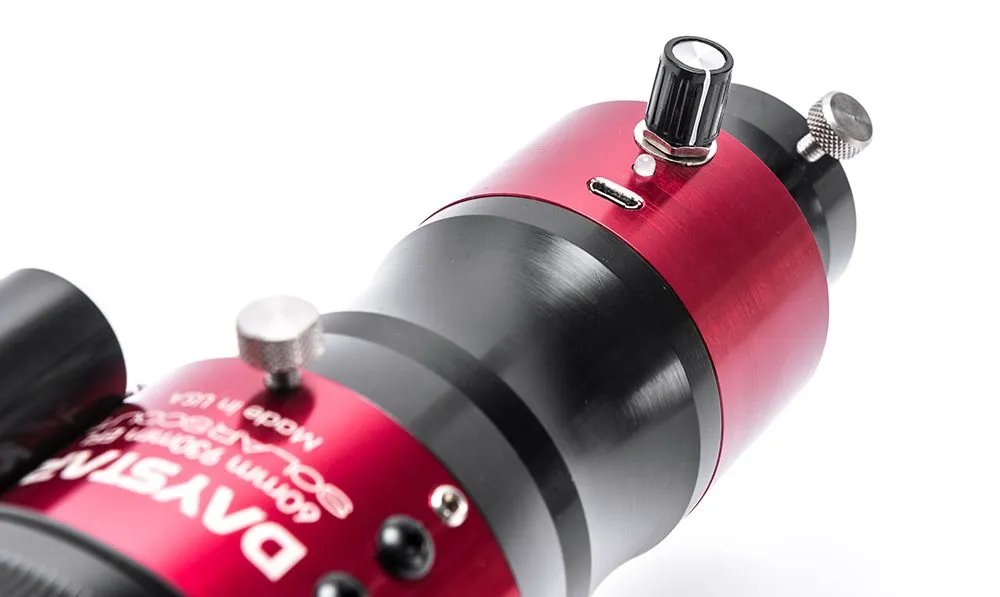
Spying surface details with the Daystar Solar Scout SS60-ds
One of the main features of the SS60-ds is the internal Ha filter, giving a bandpass of around 0.5Å.
Most solar telescopes have a bandpass of around 0.7Å, which means the SS60-ds is the equivalent of a narrower bandwidth double-stacked solar telescope.
There are positives and negatives to this depending on the features you like to view or image on our nearest star; there will be less detail in prominences with this scope’s bandpass of 0.5Å, but more detail in filaments and surface structures.
The brighter prominences are still visible and appear more connected to the Sun’s surface.
Setting the telescope up is very easy. After mounting it we plugged in the power pack and set the tuning knob to the centre. Once heated, it was ‘on band’ and the LED turned from red to green, showing that it was ready to use.
Locating the Sun in the solar finder was simple with Daystar’s ‘Solar Bullet’ finder. As once we neared the Sun a white circle appeared on the screen.
By centring the circle the Sun was in the scope’s field of view. With the included eyepiece and diagonal we could then safely begin observing.
Want to observe a solar eclipse? Find out when the next eclipse is taking place.
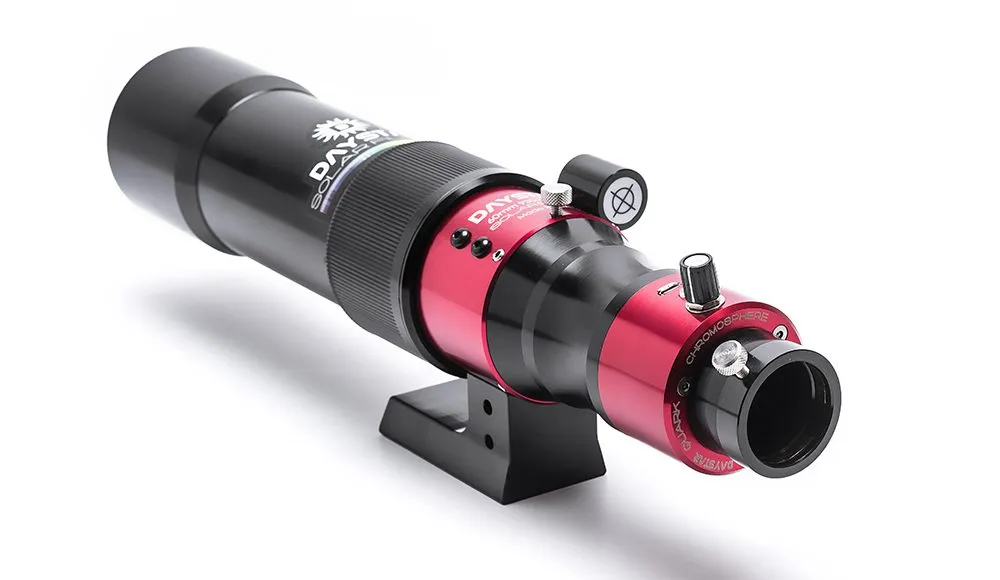
Adjusting the focuser allowed fine detail to appear. The focuser is designed to stop image shift – the apparent movement of an image caused by the internal slipping of optics in some budget telescopes.
While it worked well, it seemed a little stiff, but that could be due to the cold temperatures during our test.
We selected a small sunspot group to view and were able to locate it once the tuning knob had adjusted the wavelength.
When tuning, it took 5–10 minutes for the telescope’s LED to turn back to green to show it was again on band.
There were some small prominences to view and, with the addition of a 2x Barlow lens, we could see some lovely structural detail in them given the aperture and the low winter sun.
Daystar has always had good contrast in their solar products and we were pleased to find that the SS60-ds maintains this, helping to make objects on the surface stand out more.
Even though the SS60-ds is a budget solar scope, it is more than capable of producing some nice images for the aperture.
Setting up for imaging is very easy as the telescope allows for a camera to reach focus without the addition of a Barlow lens.
Having a long focal length of 930mm means you will need a large camera to capture a full disc image of the Sun.
We achieved this using a 1600 ASI camera; changing to an imaging camera with a smaller sensor meant that the telescope was able to get quite close-up images too.
The Daystar SS60-ds has quite a lot to offer for anyone thinking of upgrading from a white light solar setup and, at a keen price, it will fit into the budget of many astronomers.
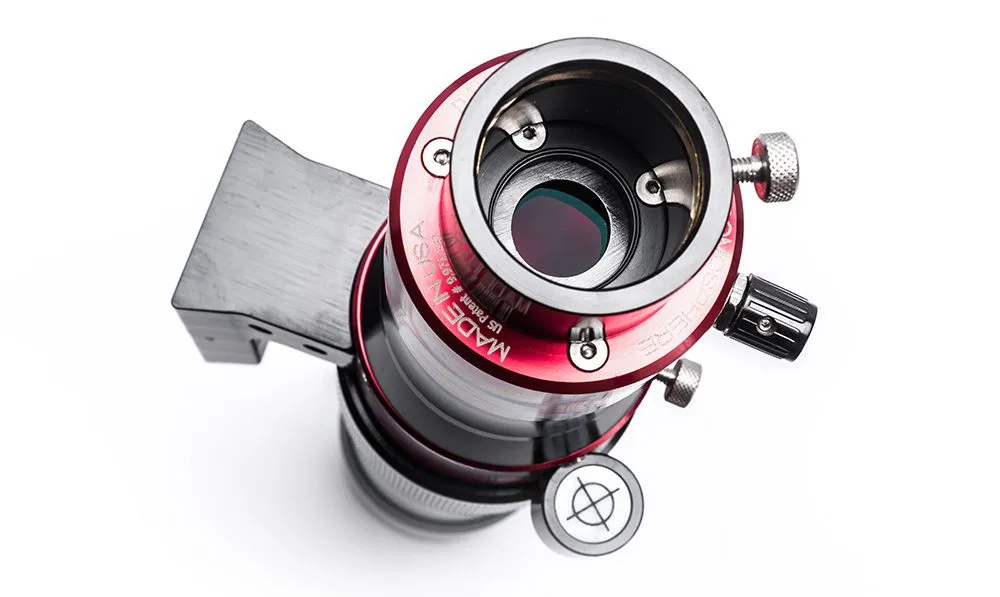
Daystar Solar Scout SS60-ds filters
Using clever design and management of the internal filters allows the SS60-ds to attain a wavelength of 656.28nm (1nm = one billionth of a metre) at around 0.5Å (1 Ångström = 0.1nm) or below – an area that has not been reached with any solar telescope at this price.
The scope also benefits from a 12mm blocking filter with a 16mm clear etalon aperture; most are around 5–6mm.
This is of great benefit when imaging with cameras that have larger sensors or when using a powerful eyepiece as it helps create less distortion in the view or image.
Using the internal heater to change the temperature helps keep the filter on band without having to adjust anything.
As with any Ha solar telescope, a mono camera will work best for imaging and a tilt adaptor is recommended to stop light bouncing directly between the camera sensor and the rear internal filter, an optical aberration known as Newton’s Rings.
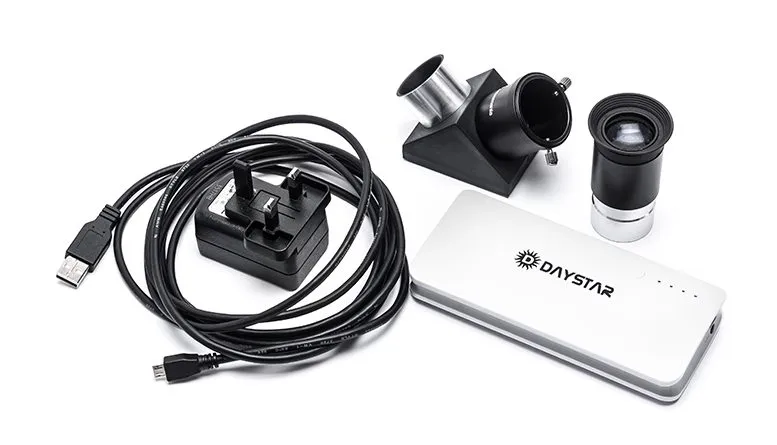
Daystar Solar Scout SS60-ds best features
Bundled accessories
With the bundle pack you can get the telescope set up and running straight away as everything you need is included in the box.
The power pack lasts around eight hours on a full charge. Also included is a 25mm Plössl eyepiece, a 1.25-inch diagonal and a power cable.
LED
The LED is red when first powered up, then will show yellow for 5–10 minutes before turning green, indicating that the filter has settled to its required temperature and is on band for viewing.
The time taken to achieve this will depend on the outside air temperature.
Tuning knob
Adjusting the tuning knob brings out more details in different areas of the Sun.
The centre wavelength can be adjusted by 0.1Å with each click, adding or subtracting contrast in the view.
After every alteration the telescope resets the temperature and the LED will change to green when ready.
Focuser
Located in the middle of the telescope, the focuser uses a well machined thread with a sleeve bearing making it easy to hold.
This allows for zero image shift and stops rotation of cameras and eyepieces.
Using this position also allows for a camera to be used at prime focus or with a Barlow.
Lens and internal Barlow
A 60mm achromatic doublet lens is used in the front of the telescope, with an internal 4.3x telecentric Barlow giving an effective F ratio of f15.5.
This all allows for a full disc view using a 25mm eyepiece.
An internal baffle system and dew shield helps maintain good contrast when observing or imaging.
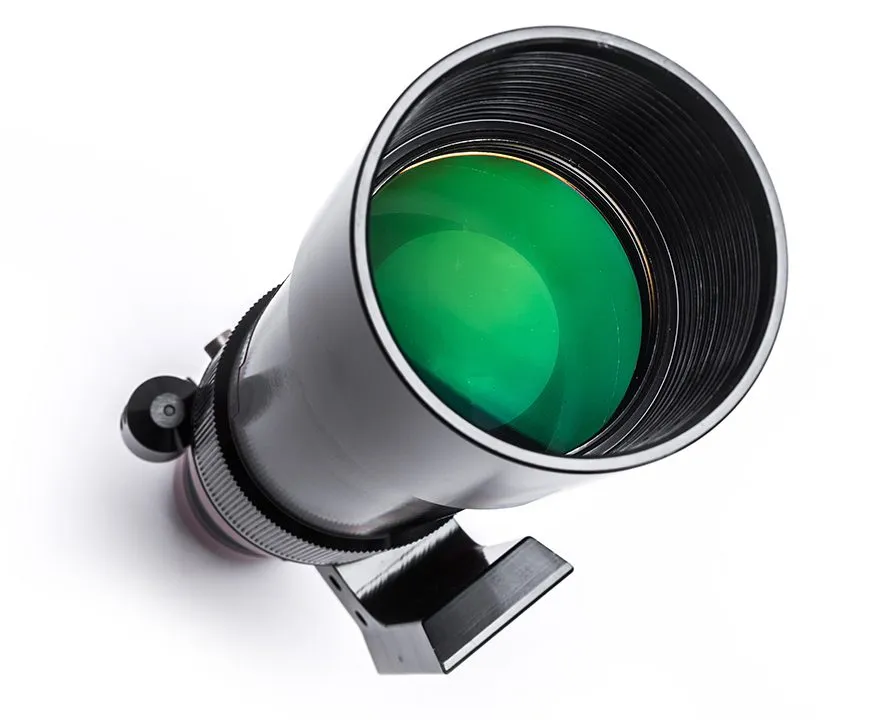
Vital stats
- Price £899
- Objective 60mm achromatic doublet
- Effective focal length 930mm
- Wavelength 656.28nm
- Power req 5v 1.5amp
- Mounting Vixen-style mounting foot
- Included 25mm Plössl eyepiece, 1.25-inch diagonal, 8-hour battery pack, USB power cable
- Weight 1.33kg
- SupplierThe Widescreen Centre
- Tel01353 776199
This review originally appeared in the April 2019 issue of BBC Sky at Night Magazine